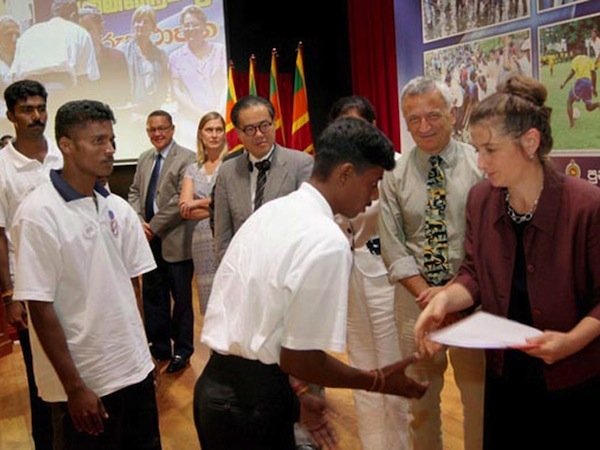Whatever the death toll during the last stages of Eelam War IV in 2009 the official government data in that year acknowledged that 11,696 (9078 male and 2024 female)[i] of those who survived had identified themselves or been identified as members of the LTTE — whether combatants or active functionaries.
There were others who had been arrested elsewhere in the island (that is beyond the battlefields), often on flimsy evidence, in the years 2006-09. Muralidhar Reddy stresses that “once bracketed in the category of a combatant, irrespective of the degree of their involvement in the war, there was no mechanism for those detained to prove their innocence.”[ii]
In parenthesis let me add that grapevine information from Tamil sources indicate that in April-May 2009 quite a few Tigers seem to have successfully merged themselves with the population that was deemed civilian and placed in the IDP camps in Menik Farm and elsewhere. Several commentators with some familiarity with the IDP camps have indicated that these detention centres were like the proverbial colander and that a significant number – estimates vary widely from 1,000 to 10,000 — slipped out of the IDP camps in mid-2009 and found their way abroad. It is alleged that at least 500 of this lot were “hardcore LTTE.”[iii]
The focus in this essay, however, is on those held in tight security arrangements as Tigers. Unlike those in the IDP camps, these detainees had no access to mobile phones and were under stricter military control. Technically they could be regarded as POWS, but the government, in what must be considered an enlightened policy, chose to treat them as Tigers-in-rehabilitation. The commencement of this policy could be dated to October 2009 when the Bureau of the Commissioner General of Rehabilitation was established. It is this programme that is reviewed here in what is no more than a preliminary survey from afar.
As preface I emphasise that it is quite amazing that no pro-government newspaper or agency provided an in-depth clarification of this programme till Ranil Wijayapala provided a description through a Q-and-A session with the new Commissioner General of Rehabilitation, Major-General Chandana Rajaguru in the Sunday Observer, 9 October 2011. While the BCGR (which works within the Ministry of Rehabilitation and Prison Reform maintains a web-site (namely, http://www. bcgr.gov.lk/), it is unlikely that many people have visited this source or that its data is widely known. I was among those in the dark till last week.
Though government newspapers from time to time highlighted the public ceremonies where ex-combatants were released, this coverage does not seem to have secured much mileage. To the best of my knowledge there have been no U-Tube or CD presentations of the rehabilitation programmes and the graduation ceremonies of release widely disseminated in the internet circuit of universal access. In a word, the prosaic governmental measures of publicity seem to have done a disservice to the work of several well-intentioned officials. Let me clarify why I make this remark by first distilling the information provided in the Rajaguru-Wijayapala dialogue, the mission statements and other data within the BCGR website and data from elsewhere.
Numbers: In differentiation from the figure of 11,800 persons identified as Tigers in mid-2009, Rajaguru[iv] now refers to a rounded figure of 12,000. But, guided in part by th interview as supplement to grapevine informaiton one has to supplement this figure with (a) Tigers captured or arrested in the years 2006-08 and (b) those arrested in the course of intelligence operations subsequent to May 2009. On this foundation I speculate that the figure of Tigers in government custody in the course of years 2009-10 was in the range 11,800 to 13,000. There is, clearly, a need for greater precision in official figures in this field.
This cluster of Tamil Tigers was kept in 24 centres, with four centres catering to the females (2024 less the children). From this total, 594 individuals below sixteen were classified as children and 273 from this lot were sent to attend Hindu College at Ratmalana for schooling[v] and it is this highly specific exercise that received a public airing in BBC’s Hard Talk Programme through the energy of Stephen Sackur.[vi]
The rest were placed under six categories after investigation of some sort: leaders, staunch combatants, fetchers & carriers, political cadre, supporters and labour-conscripts.[vii] A foreign INGO official[viii] who had some interaction with the military once indicated to me in mid-2010 that the Army considered about 15-20 percent of this mass to be hardline LTTE. The implication was that they could be incorrigible and in need of strict supervision if not prosecution in some instances. The answers provided by Rajaguru enable one to conjecture that many of these hardliners and staunch followers would have been incarcerated at Boosa in the south rather than elsewhere.
If all this indicates a tough regime and POW status for these Tiger personnel, other details, a series of events, the details in the BCGR website and the character of the agencies involved in training and alleviating the lives of these Tiger detainees, simply destroy such a verdict. In fact the government insisted on designating the ex-Tigers as “rehabilitees” and proceeded to institute a number of programmes to effect a transformation in their thinking and prospective circumstances. Let me elaborate.
Costs: This was a costly exercise involving the basics of food, clothing and dormitory shelter, plus the organisational costs of training, transport et cetera. At the outset in 2009 and 2010 the government claims that it forked out Rs. 150 million a month though this has gradually wound down to the present figure of Rs. 50 million a month as more and more were “released to their families.” As these ex-Tigers were released several centres have been phased out and by June 2011 there were only 8 remaining.[ix] Rajaguru indicated that a total of Rs.1.3 billion has been spent by GoSL thus far.[x] An IOM representative remarked in February 2011 that they required 15 million US dollars for the programme; [xi] and a British embassy official indicated that “UK [had] contributed £1.5 million to fund vocational training for former child soldiers in partnership with UNICEF and the Sri Lankan Government.”[xii]
A critical component of expenditure was provided by the International Organization for Migration (IOM). IOM’s website includes a mission statement that says: (a) “At present, IOM’s interventions focus on assisting the government to resettle displaced populations in their villages of origin and to reintegrate former combatants, thus supporting national efforts in building peace and stability;” and (b) underlines the importance of “IOM and state actors [enhancing their] institutional capacity to combat human trafficking and irregular migration” so that “IOM in partnership with relevant stakeholders offers voluntary returnees a tailor-made return and reintegration package.”[xiii]
As this statement indicates, the IOM has also been heavily involved in financially supporting the resettlement of civilian IDPs from the Menik Farm and other camps. In this task it has been a conduit for monies channelled from the governments of USA, Australia, Netherlands, Norway, Japan and UK. In the Australian case this includes considerable monies coming from AusAid; while the Department of Immigration and Citizenship, Australia (DIAC) became one of the agencies working through IOM.
I do not have firm evidence that donor countries have financed the rehabilitation of ex-combatants. But it is of some significance that the ambassador for the Netherlands visited the Tellippalai centre on 16th November 2010, while the British HC, John Rankin, visited Poonthottam RC at Vavuniya on 22 June 2011.[xiv] This indicates that several countries kept a weather eye on the programme and kept in touch with the IOM for this purpose. It is because of this connection, therefore, that one canpresume that the grand function at Temple Trees on 30 September 2011, which saw the graduation so to speak of 1800 rehabilitees, had a ‘crop’ of foreign dignitaries seated up front, while a few participated in the distribution of certificates.[xv]
Organisation & Rehab-Programmes: While the military supervised the detention centres, Rajaguru’s interview indicates that much of the training was in the hands of uniformed personnel from the National Cadet Corps, many of whom were teachers by profession. Critically, the programmes depicted in skeleton form in the BCGR web site indicate that there were a wide variety of paths deployed to assist the re-orientation of the detainees and to fit them for future life. The statement on the front page of the web site proclaims that: [the detainees] were provided training in areas such as [the] use of English language, leadership skills, management of small business enterprises, clerical and administrative know-how. Vocational training comprised computer technology, masonry, plumbing, carpentry, arts & crafts, music and drama, food preparation etc. The rehabilitation programme was planned to enable the beneficiaries to engage in self-employment activities following reintegration into society and become fully productive members of civil society.
If my recollections are correct, those Tigers who were university students were released to the Vice Chancellor of Jaffna University quite early in the piece, perhaps in late 2009.[xvi] According to Rajaguru’s recent interview other adults who had foregone their schooling because of the war were permitted to study and sit for either the O-Level or A-Level examinations. One news item indicates that 175 sat for the GCE O/L examination in 2010 (38 passed in all the subjects), while 361 sat the GCE A/L examination (222 passed).[xvii]
What is praiseworthy in this policy has been the emphasis on vocational and technical education rather than the standard clerical streams. In my reading, the education system in Sri Lanka over the past 50 years has been quite sterile because of its overemphasis on paper qualifications and its encouragement of white collar status. Arguably, in the south and centre of the island it has been a process geared to the production of a steady stream of recruits to the radical chauvinist Left associated with the JVP and the JHU.
From this standpoint, then, the vocational, technical and petty business leanings in the BCGR programmes are just what the Tamil peoples and the country-at-large requires for the near future. Critical to this orientation has been the engagement of some mercantile companies in the training programme: Abhina, Holcim, David Pieris Motor Company, Venntures, Virtusa, VUSAA and the Federation of Chambers of Commerce & Industry for instance.
Arbitrary examples of this line of training in reverse temporal order drawn from the long list on the BCGR site are:
- Learning Basic Principles of Entrepreneurship development and training conducted by Survivors Association held at Pampemadu for 40 Rehabilitants … 22 Sept. 2011.
- Palmyra leaves related Handicrafts creations training course continue at Poonthottam PARC facilitated by Survivors Association for 35 Rehabilitants from 6th July to 6th October 2011.
- Leather work training course from 28th February to 10th June 2011 at Thelippalai PARC…. 28 Feb. 2011.
- 2nd Batch Training Course of IDM Computer Training Program was Commenced at Maradamadu Tamil Primary, Technical collage [sic] … 22 Feb 2011.
- 5th batch of David Peris motor mechanic training course was completed… 25 January 2011.
- Masonry related vocational training program Commenced at Dharmapuram PARC for 200 beneficiaries for 15 days. Facilitated by National Apprentice and Industrial Training Authority (NAITA) and Sponsored by Holcim Cement.…. 23 August 2010.
- Vocational training course held at Handwerk Vocational Training Centre, Payagala, facilitated by FCCISL [attend 60 beneficiaries]…. 9-25 August 2010.
In an imaginative leap the BCGR also utilised the actress Anoja Weerasinghe’s social commitment to provide training in dance and drama for some of the former Tigers with the result that a dancing troupe has eventuated and are said to be in great demand.[xviii]
“Release” with Tamasha: Recent official announcements proclaimed that “over 9,500 youth who took arms have been reunited with their families after following rehabilitation in 24 State-run centres;”[xix] though another 1000 or so were still in detention in early October 2011. This release of Tiger personnel has occurred gradually from mid 2010 onwards.[xx]
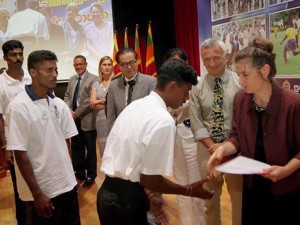
Several of these moments of “release” have been presented with considerable fanfare in local newspapers aligned with the government. On one occasion the state arranged for public marriage ceremonies for former Tiger rehabilitees and their partners. The largest of these tamashas was held at “Temple Trees” on 30 September 2011 when 1800 ex-Tigers “passed out,” so to speak, as free citizens in front of their relatives and an assemblage of foreign and local dignitaries. A cultural performance (presumably by one of their own troupes) entertained the large crowd, while the High Cpommissioner for Australia, Kathy Klugman, and other ambassadors handed out certificates.[xxi] 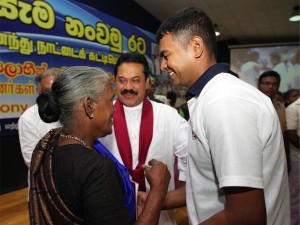
Clearly there is a self-congratulatory and propaganda aspect when the GoSL organises such high-profile functions. Generalized cynicism or hostility to the Rajapaksa regime should not, however, lead one to underestimate the implications of such a process. The critical question is this: how do the ex-Tiger fighters and their kinfolk view such moments? The plausible answer is that these ceremonial functions are akin to a graduation ceremony and a momentous point in their life, even conceivably a “transformational” landmark. This is a verdict that I present on a priori reasoning. 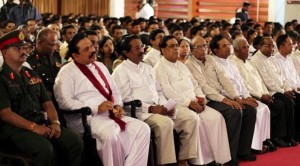
Both the images presented in the government media and the responses of released Tigers in brief interviews carried out by pro-government media personnel indicate their delight at the new situation; while video interviews on the BCGR website praise the training received. The outside world may well be skeptical about seeing this evidence as a representation of generalized satisfaction among the former Tigers because it has been mostly purveyed by tame reporters in government run newspapers.[xxii]
The GOSL has not matched its enlightened policy with an enlightened presentation of self in the face of a suspicious world. What is required in such moments is the encouragement and scope for fearless commentators of the Ruki Fernando, Indi Samarajiva and Mutthukrishna Sarvananthan kind, as well as journalists from the Sunday Leader, to speak unmonitored with rehabilitees of their choice.[xxiii] This should have been seconded by the promotion of independent agencies to pursue studies of the process of reintegration at the local level over a period of months. It would seem that the official world is hidebound within a mind-set attached to top-down control and lacks imagination in propaganda techniques, or combines both tendencies, in ways that encourage shortcomings in the dissemination of what could well be a remarkable story.[xxiv]
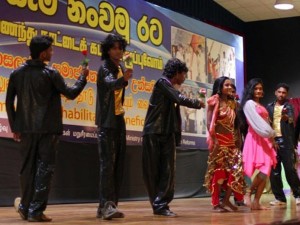
Monitoring and Process of Reintegration: Rajaguru makes it clear that security concerns also governed the manner of “release” from detention:
Most of them have families. …. We reintegrate people only when have an address of known relatives. We locate them and then only we reintegrate them to society. This is being done by the military intelligence when we provide them with the information given by the rehabilitate (sic). So, they are going back to the people they know. There is no case of any individual being released without background being checked.
These individuals were not just cast adrift. It would appear that the process of resettlement was organised with the cooperation of IOM who used donor funds to provide them with equipment and tool kits. As critically, attention has been paid to the provision of micro-financing, while local banks have been induced to grant “low interest loans with grace periods and a repayment period of ten years.” This line of post-release support is depicted by Rajaguru as a “period of re-insertion” and a process of “community-based rehabilitation” that merges with the resettlement of other IDPs in those parts of the Vanni that were deserted by the inhabitants under the guns of the LTTE as the latter retreated in 2008 and early 2009.
While there is much that is commendable in this subsequent programme, one must exercise caution in accepting these official pronouncements at face value. Such concepts as “reintegration” do not work like mantra and require examination through ethnographic studies of individual biographies and broader processes over time. A study conducted by a triumvirate (de Croos et al 2011) who explored the subjective experiences of 15 former detainees depicts an alarming picture. Several stated that they had received little training. “All ex-detainees stated that the CID and Army visited their homes at least once a week or once every fortnight and checked on their whereabouts and details.” Not all had received IDs and everyone had been instructed to seek permission if they travelled beyond their village. [xxv]
Such restrictions, needless to say, have generated frustration and resentment. The investigators met “three mothers of former detainees from the same villages, two of whom had already left Sri Lanka for safety reasons.” This meant tightening screws of surveillance and spiralling levels of dissatisfaction.
Several of those interviewed also stated that the level of surveillance had increased significantly following the ‘disappearance’ of a woman ex-combatant from the village in late 2010. This person was a senior LTTE carder (sic) who had been released and had returned home to the village. Many believe that she has been taken to India for safety. Following her release, several ex-detainees have been questioned by intelligence officers regarding her whereabouts. Her father and sister were also taken into custody briefly and questioned but were later released.
This is not a pretty tale at all. It reveals that the training provided in the rehabilitation programme is not as comprehensive as it has been made out to be; and that the results are erratic at best.[xxvi] As vitally, the longer-term prospects of goodwill are being seriously undermined by the overwhelming concerns with security. Having classified detainees into several categories in the security centres, the paranoid surveillance methods treat all those released alike. They also seem to be restraining freedom of movement and thus freedom of trade.
Given the extensive networks of army cantonments in the north, given the recruitment of some ex-Tigers into the networks of military intelligence[xxvii] and given the degree to which a wide spectrum of the Tamil population is “conflict saturated” and alienated by the extremism of the Tamil diaspora,[xxviii] the prospects of any guerilla activity re-emerging in the north are minute. The ham-handed vigilance that has been highlighted by Croos et al is therefore as silly as counter-productive.
In brief, the left-hand is removing what the right-hand has sought to achieve. It is not only a question of some unhappy rehabilitees, but the ripples of dissatisfaction that are being generated through the networks of kin, friends and locality. Such ripples will invariably link up with those political figures speaking up for the Tamils. That is as it should be: local politicians must represent their constituency.
What we now require are more in-depth locality studies of resettlement in the Vanni by independent university or research agencies deploying social scientists with the requisite language and ethnographic skills. Such studies should embrace both the civilian IDPs and rehabilitees; and should have some longitudinal temporality built into them.
Our assessments will then be better grounded. It would seem that the rehabilitation programme has been erratic in its processes. Though one can congratulate the government of Sri Lanka for the measures taken to release and help the former Tiger personnel,[xxix] the forms of surveillance that have been set up are extreme and undermine the broader goal of reconciliation. The pleasure revealed by the rehabilitees at their graduation ceremonies will wane if and when they are subject to harassment by local-level minions or restricted in the pursuit of their career goals. They (or some of them) and the Tamils around them will be confirmed in the impression that they are second-class citizens – a subjective reading that has been prevalent in Tamil society for many decades. Rehabilitation of former Tigers and reconciliation between Tamils and the other ethnic communities will only develop solid foundations if political and administrative measures confirm to Tamils their dignity as citizens of equal worth.
BIBLIOGRAPHY
Abeywickrema, Mandana Ismail 2011 “Rehabilitation and Re-Integration of Former LTTE Cadres,” Sunday Leader, 9 January 2011.
BCGR n. d. “Reuniting Rehabilitated ex-combatants with their families and Reintegrating them into Society,” http://www.bcgr.gov.lk/
Karunanayake, Samanmali 2010 “Ex-LTTE cadres recalled to a life of fruitfulness,” Daily News, 11 October 2011.
Croos, Fr. J., Deanne Uyangoda & Ruki Fernando 2011 “Threats, Harassments and Restrictions on Former Detainees and Their Families in Vanni,” 11 May 2011, http://www.globalpeacesupport.com/ globalpeacesupport. com/post/2011/05/14/
Daily News 2010 “Ex-LTTE cadres well looked after — IOM Chief,” Daily News, 18 December 2010.
DeSilva-Ranasinghe, Sergei 2010a “Exclusive Interview with Thirunavukkarasu Sridharan,” South Asia Defence & Strategic Review Sept-Oct 2010, pp. 46-49.
DeSilva-Ranasinghe, Sergei 2010b “Civilian casualties, IDP camps and asylum seekers,” South Asia Masala online, 9 Dec. 2010 http:// asiapacific.anu. edu.au /blogs/southasiamasala/2010/12/09/civilian-casualties-idp-camps-and-asylum-seekers/
DeSilva-Ranasinghe, Sergei 2010c “The 13th Amendment to the Constitution must be properly implemented” says Dharmalingam Siddharthan, www.transcurrents.com, 23 December 2010.
Ferdinando, Shamindra 2011a “Dy British HC says re-integration of ex-combatants important part in reconciliation process,” Island, 27 May 2011.
Ferdinando, Shamindra 2011b “Military visitors see facility rehabilitating LTTE cadres,” Sunday Island, 12 June 2011.
Ferdinando, Shamindra 2011c “LTTE rump ignores ex-combatants undergoing rehab,” Island, 17 June 2011.
Haviland, Charles 2011 “Tamil Tiger releases hit by rehabilitation problems,” BBC News, Colombo 3 Jan. 2011 (http://www.bbc.co.uk/news/world-south-asia-12108479).
Irin News 2010 “Sri Lanka: former female fighters strive for a better life,” 29 Sept. 2010 (http://www.irinnews.org/report.aspx?reportid=90613).
Nadesan, Noel 2011 “Australia’s positive role in Sri Lanka,” http://noelnadesan.wordpress.com/ 2011/10/11/australia%E2%80%99s-positive-role-in-sri-lanka/
Radhakrishnan, R.K. 2011 “Former LTTE combatants rehabilitated,” The Hindu, 4 Feb. 2011 (http://www.thehindu.com/news/international/ article1155465.ece).
Sackur, Stephen 2010a “A Sri Lankan re-education for Tamil child soldiers,” http://news.bbc.co.uk/2/hi/programmes/from_our_own_correspondent/8721974.stm.
Sackur, Stephen 2010b “Former child soldiers rebuilding their lives,” Hard Talk pod cast, in three parts, http://www.youtube.com/watch?v=Qf5U5NB9Mk0.
Sriyananda, Shanika 2011 “LTTEers reintegrated bright brush strokes emerge,” Sunday Observer, 9 October 2011…. http://www.sundayobserver.lk/2011/10/09/fea03.asp
Wamanan, Arthur 2011 “Rehabilitation: Beginning a new life,” Nation, 24 April 2011.
Wijayapala, Ranil 2011 “Rehabilitation, resettlement of ex-LTTEers, a success,” Sunday Observer, 9 October 2011.
- Thiru Sridharan: “8,000-2000” [with about ]’500 hardcore members [of the LTTE]” (deSilva Ranasinghe, 2010a, p. 47);
- D. Siddharthan: “Definitely not less than 5000-6000 people fled the IDP camps. Out of that at least 500 [were] hardcore LTTE”( deSilva Ranasinghe, 2010a).
- Fr Rohan Silva: “Maybe about 1000-2000 … mostly people with money and influence” (deSilva Ranasinghe, 2010b).
